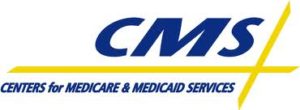PA Chosen for Behavioral Health Services Demo
Pennsylvania will be one of eight states to participate in a new federal two-year Certified Community Behavioral Health Clinic demonstration program.
 According to the federal Substance Abuse and Mental Health Services Administration, the program is
According to the federal Substance Abuse and Mental Health Services Administration, the program is
…designed to improve behavioral health services in their communities. This demonstration is part of a comprehensive effort to integrate behavioral health with physical health care, increase consistent use of evidence-based practices, and improve access to high quality care for people with mental and substance use disorders.
A federal spokesperson explained that
The demonstration program will improve access to behavioral health services for Medicaid and CHIP beneficiaries, and will help individuals with mental and substance use disorders obtain the health care they need to maintain their health and well-being.
The program is authorized under Section 223 of the Protecting Access to Medicare Act of 2014. Last year the federal government awarded 24 states planning grants under the law. Nineteen of those states applied to participate in the program and eight, including Pennsylvania, were ultimately chosen.
As part of its application, Pennsylvania designated ten sites for program implementation:
- Berks Counseling Center, Berks County
- Cen Clear Child Services, Clearfield County
- Cen Clear Punxsy, Jefferson County
- Community Council Health Systems, Philadelphia County
- NHS Human Services, Delaware County
- Northeast Treatment Centers, Philadelphia County
- Pittsburgh Mercy, Allegheny County
- Resources for Human Development, Montgomery County
- Safe Harbor Behavioral Health of UPMC Hamot, Erie County
- The Guidance Center, McKean County
According to the state, the programs at these sites will:
- enhance access to behavioral health services for Medicaid and CHIP beneficiaries,
- help individuals with mental health and substance use disorders obtain the health care they need to maintain their health and well-being,
- allow individuals to have access to a wide array of services at one location, and
- remove the barriers that too often exist across physical and behavioral health systems.
Learn more about the demonstration from this news release from the U.S. Department of Health and Human Services. Learn more about Pennsylvania’s plans for its demonstration program from this news release from the state’s Department of Human Services.
 In this new model, the Innovation Center
In this new model, the Innovation Center
 And while operating margins for psychiatric and specialty hospitals declined, they still remain generally strong at 8.81 percent and 7.78 percent, respectfully.
And while operating margins for psychiatric and specialty hospitals declined, they still remain generally strong at 8.81 percent and 7.78 percent, respectfully.


